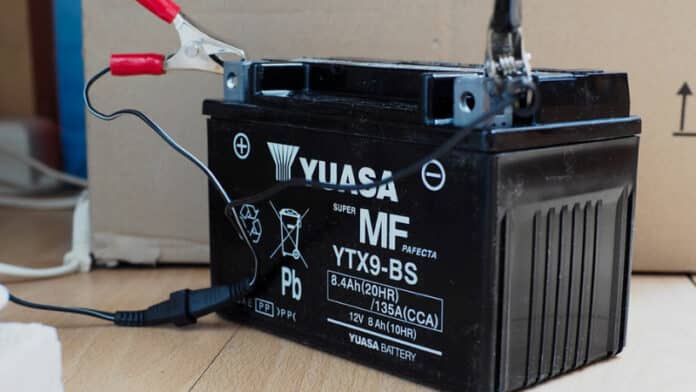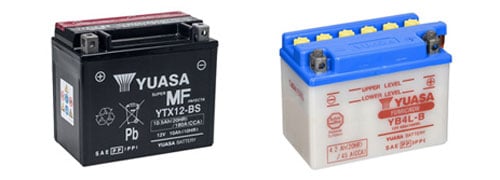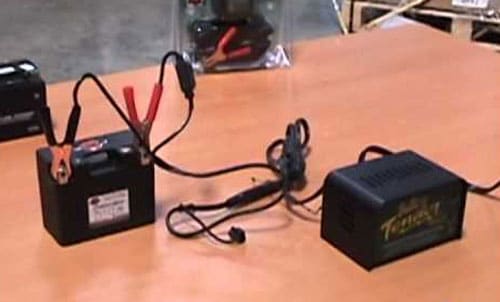How Long Does It Take to Charge a Motorcycle Battery and Why?

Though it sounds like a simple enough task, there is still some forethought and preparation that needs to go behind charging your motorcycle battery.
You may have scoured numerous motorcycle battery reviews to buy the best motorcycle battery for your vehicle, but it will still only last you three to four years (or even less).
However, a discharged battery is not completely unsalvageable. You can charge it and bring it back to life, and this article will tell you how to do that, as well as how to prepare for it and the overall amount of time the charging will take.
Table of Contents
Factors Affecting Charging Time for Motorcycle Batteries
How long it takes for a battery to fully charge depends on factors such as the type of battery, the battery’s voltage, the type of charger you are using, the battery’s age, and whether or not there is something wrong with the battery itself.
Let us begin by taking a look at the types of motorcycle batteries that are widely available.
Types of Motorcycle Batteries
The most common types of motorcycle batteries are wet cell batteries, AGM (absorbed glass mat) batteries, and gel cell batteries. Lithium batteries are also used for motorcycles, though not as widely as the other three types.

It is quite easy to find various types of chargers for wet cell, AGM, and gel cell batteries, though lithium batteries require special chargers.
Types of Motorcycle Battery Chargers
Some of the common types of chargers for motorcycle batteries include smart chargers, trickle chargers, and float chargers.
Trickle chargers are the most common. They are manual chargers that will charge your motorcycle battery until you disconnect it. Needless to say, you should be monitoring your battery’s voltage while using a trickle charger so that it does not lead to disaster.



A smart charger, on the other hand, is known to only charge a battery to the point that it needs to be charged. However, smart chargers may not be compatible with lithium batteries, so keep that in mind.
Lastly, float chargers are similar to smart chargers in that they do not let the motorcycle battery be overcharged. A float charger will turn itself on or off, depending on whether the battery needs or does not need to be charged more. They are arguably the best motorcycle battery chargers.
Problems with the Battery Itself
Before charging your battery, you should do a physical inspection of it to check for leaks, bumps, discoloration, corrosion, etc. in the battery’s terminals.
If you are charging your battery for a few hours without any improvement (that is, the motorcycle still will not start), do not bother reaching for a motorcycle jumpstarter and instead consider the possibility that you may need to replace your battery.
Charging Your Motorcycle Battery
The first step is to remove your battery from your motorcycle before you charge it. By doing so, you avoid the risk of your motorcycle being harmed if a fuse blows inside your battery.
A battery that is discharged but is otherwise in good condition will only require about 2 to 3 hours being charged by a smart charger. Continually check the battery’s voltage while charging to make sure that it is actually taking charge.



If you do not have a smart charger, you can, of course, use an older motorcycle battery charger. However, be ready to wait as little as 4 hours and as long as 24 hours for your battery to be fully charged.
In case you cannot monitor the charging level of your battery, it is safe to charge it at low amperage (at most 2 amps).
Though charging at higher amperages is faster, in the long run, it will negatively affect the health of your motorcycle battery, so try to ignore the temptation of charging at a high amperage.
Further Precautions while Charging Your Motorcycle Battery
You want to charge your battery in an area that has lots of ventilation. The hydrogen gas given off by a battery that is charging is highly flammable. If your battery does end up overcharging, then even more harmful hydrogen sulfide will be produced, and you do not want to be in a closed-off area if that happens.
This is obvious, but make sure your charger is plugged into your battery correctly, as incorrect connections could harm your battery.
Conclusion
In short, your battery should not take more than some hours to fully charge, given that the battery is in good condition, and you are using an up to date charger (such as a smart charger or a float charger).
However, if you are using an older charger, make sure to frequently check whether your battery is charging properly or not, and also that it does not accidentally overcharge.
Lastly, stay optimistic but also know that some batteries are better left discharged and replaced.
